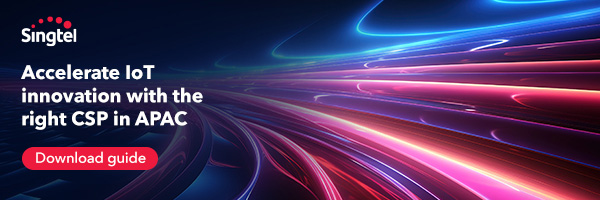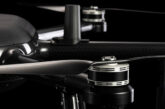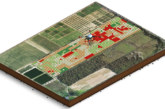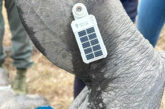![]()
Asset tracking has long been a critical function in various industries, from logistics and manufacturing to healthcare and retail. Traditionally, it relied on manual processes and human intervention, often leading to inefficiencies and errors. However, the emergence of the Internet of Things (IoT) has revolutionized asset tracking by offering real-time visibility, predictive insights, and automation. In this article, we will explore how IoT is reshaping asset tracking applications, its key advantages, and the implications for industries worldwide.
IoT in Asset Tracking
Asset tracking is the process of monitoring and managing physical assets throughout their lifecycle. These assets can be anything from vehicles and equipment to inventory and medical devices. IoT introduces connectivity and intelligence to asset tracking, providing organizations with a wealth of information and control that was previously unimaginable.
Key Applications of IoT in Asset Tracking
1. Supply Chain and Logistics
The supply chain and logistics industry relies heavily on asset tracking to monitor the movement of goods, optimize routes, and ensure the timely delivery of products. IoT-enabled devices, such as GPS trackers and sensors, offer real-time information about the location and condition of assets, improving efficiency and reducing the risk of theft or damage.
2. Manufacturing
In manufacturing, IoT is transforming asset tracking by providing real-time insights into equipment status, maintenance needs, and production efficiency. Sensors can monitor the health and performance of machines, helping organizations proactively address maintenance issues and reduce downtime.
3. Healthcare
Hospitals and healthcare facilities use asset tracking to monitor medical equipment, medications, and even patients. IoT devices ensure that critical medical assets are readily available when needed, reducing delays and improving patient care.
4. Retail
Retailers use IoT for inventory management and theft prevention. RFID tags and sensors on merchandise help stores monitor stock levels, track the movement of products, and identify instances of shoplifting.
5. Agriculture
IoT is also making waves in agriculture by enabling farmers to track the location and status of equipment, monitor environmental conditions, and optimize irrigation and fertilization processes. This improves crop yields and resource efficiency.
6. Fleet Management
IoT solutions for fleet management involve the real-time tracking of vehicles, monitoring driver behavior, and optimizing routes. These applications enhance operational efficiency and safety while reducing fuel consumption.
Benefits of IoT in Asset Tracking
The integration of IoT in asset tracking offers numerous advantages:
1. Real-time Visibility
IoT provides real-time data on the location, status, and condition of assets. This allows organizations to make informed decisions promptly and respond to issues as they arise.
2. Predictive Maintenance
IoT-enabled asset tracking can predict when equipment or vehicles require maintenance. By monitoring parameters like engine health, temperature, and usage patterns, organizations can schedule maintenance proactively, reducing downtime and costs.
3. Automation
Automation is a significant benefit of IoT in asset tracking. Devices and sensors can trigger automated actions, such as reordering inventory when stock levels are low or redirecting vehicles based on real-time traffic data.
4. Cost Savings
Efficiency gains and predictive maintenance lead to cost savings. Organizations can reduce maintenance costs, fuel consumption, and the risk of theft or loss.
5. Improved Safety
IoT enables improved safety by monitoring and assessing driver behavior, equipment health, and environmental conditions. This not only enhances safety but also reduces the risk of accidents and breakdowns.
6. Enhanced Productivity
IoT-driven asset tracking applications optimize processes, reduce downtime, and streamline operations. This results in increased productivity and better resource allocation.
Challenges and Considerations
While IoT in asset tracking offers numerous benefits, it also poses challenges and considerations:
1. Data Security and Privacy
Collecting and transmitting data from assets raises concerns about data security and privacy. Organizations must implement robust security measures to protect sensitive information.
2. Interoperability
IoT devices and systems must be compatible and interoperable to ensure seamless data exchange and integration. Common standards and protocols are necessary for achieving this.
3. Scalability
As organizations expand their asset tracking capabilities, ensuring that the IoT infrastructure is scalable and can handle a growing volume of data is crucial.
4. Cost of Implementation
The initial cost of implementing IoT for asset tracking can be a barrier for some organizations. It’s essential to assess the return on investment over the long term.
5. Workforce Training
The successful adoption of IoT in asset tracking often requires workforce training and a cultural shift within organizations.
The Future of IoT in Asset Tracking
As technology continues to advance, the future of IoT in asset tracking looks promising. Here are some trends and developments to watch for:
1. Artificial Intelligence (AI)
IoT and AI will work hand in hand to analyze vast amounts of asset tracking data, offering insights for predictive maintenance, anomaly detection, and process optimization.
2. Edge Computing
Edge computing, which involves processing data closer to the data source, will become more prevalent. This reduces latency and can be crucial for applications that require rapid decision-making.
3. 5G Connectivity
The rollout of 5G networks will provide faster and more reliable connectivity for IoT devices, enabling real-time data transmission and better support for asset tracking applications.
4. Blockchain Technology
Blockchain can be used to enhance the security and integrity of asset tracking data, ensuring that data remains accurate and private.
5. Autonomous Systems
IoT-enabled asset tracking will contribute to the development of autonomous systems in various industries. These systems will use real-time data to make decisions and take actions, reducing the need for human intervention.
Conclusion
The Internet of Things is revolutionizing asset tracking across multiple industries by providing real-time visibility, predictive insights, and automation. Challenges related to data security, interoperability, and workforce training must be addressed to ensure that the benefits of IoT in asset tracking are fully realized.
As IoT technology continues to evolve, it will remain a driving force in asset tracking, offering a glimpse into a future where organizations have unprecedented control and visibility over their assets, leading to increased efficiency, cost savings,







